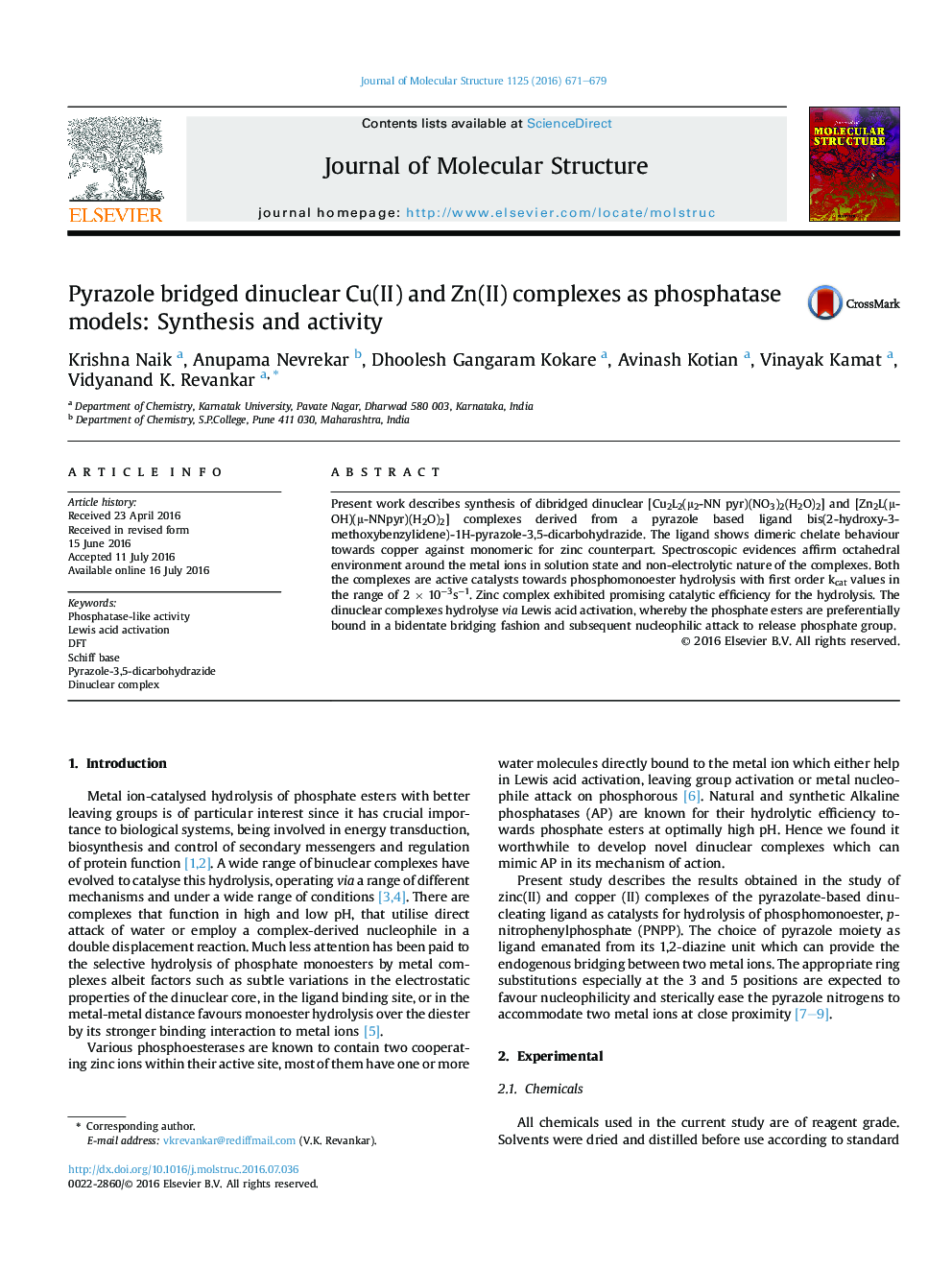| Article ID | Journal | Published Year | Pages | File Type |
|---|---|---|---|---|
| 1400984 | Journal of Molecular Structure | 2016 | 9 Pages |
•Synthesis of two new dinuclear complexes (CuII and ZnII) is reported.•Structurally characterised complexes were optimized with DFT.•They were tested for the potency to catalyse phosphate ester hydrolysis.•Hydrolysis mechanism involves Lewis acid activation.•Both the complexes show excellent activity.
Present work describes synthesis of dibridged dinuclear [Cu2L2(μ2-NN pyr)(NO3)2(H2O)2] and [Zn2L(μ-OH)(μ-NNpyr)(H2O)2] complexes derived from a pyrazole based ligand bis(2-hydroxy-3-methoxybenzylidene)-1H-pyrazole-3,5-dicarbohydrazide. The ligand shows dimeric chelate behaviour towards copper against monomeric for zinc counterpart. Spectroscopic evidences affirm octahedral environment around the metal ions in solution state and non-electrolytic nature of the complexes. Both the complexes are active catalysts towards phosphomonoester hydrolysis with first order kcat values in the range of 2 × 10−3s−1. Zinc complex exhibited promising catalytic efficiency for the hydrolysis. The dinuclear complexes hydrolyse via Lewis acid activation, whereby the phosphate esters are preferentially bound in a bidentate bridging fashion and subsequent nucleophilic attack to release phosphate group.
Graphical abstractFigure optionsDownload full-size imageDownload as PowerPoint slide
